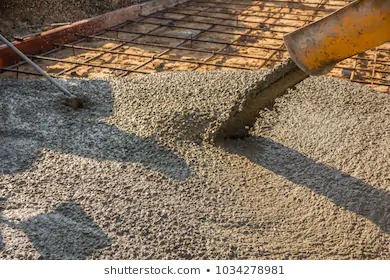Excavation and Excavation Tolerance
Excavation
Excavation is the procedure of removal of earth sand, rock and other material according to the drawing with the help of different tools those who use in construction.
Measurement
Quantities of excavation shall be calculated measured from the pre-work levels of leveled and graded ground taken jointly by the contractor and the engineer before commencement of the work. The qualities set out for excavation and its subsequent disposal shall be deemed to be the bulk quantity before excavating and no allowance shall be made for any subsequent variations in bulk for any extra excavation.
Excavation Tolerance
Excavation shall be performed within the tolerance for excavation limit indicated on the drawings, where no tolerance limits are indicated excavation shall be performed to tolerance established by the engineer as acceptable for the design and type of work involved.
Filling and Back filling
After completion of foundation footing, foundations, walls and other construction below the elevation of the final grades and prior to filling forms shall be removed and the excavation shall be cleaned of trash and debris.The back filling shall include filling under the floors, around the foundation trenches, pipes, conduits, duct and channels.
Filling shall be approved selected material obtained from outside sources. It shall be predominantly granular materail and free from slurry mud organic or other unsuitable water and capable of compaction by ordinary means.
The back filling shall include loading, unloading transporting, placing,stacking, spreading of earth, watering, rolling, ramming and compacting etc.
Filling in trenches and foundations shall be placed in 200 mm layers and compacted at the optimum moisture content by mechanical means or other means approved by engineer.
Back filling shall be done in layers of thickness not exceeding 30 to 45 cm depending on compaction equipment and method (loose soil before compaction). The soil layer shall then be watered adequately and compacted to minimum 90% to 95% of Standard Proctor Density for soil other than sand and 85% in case of sand. Compaction shall be carried out at optimum moisture content. Soil after compaction shall be free from pockets underneath.
After the compaction of final layer of soil, at least 3 cores shall be taken from the areas directed by Site Engineer and the soil shall be tested in laboratory for the degree of compaction achieved. Results shall be matched above.If the soil is excessively wet, it shall be allowed to dry sufficiently before compaction.
After the compaction of final layer of soil, at least 3 cores shall be taken from the areas directed by Site Engineer and the soil shall be tested in laboratory for the degree of compaction achieved. Results shall be matched above.If the soil is excessively wet, it shall be allowed to dry sufficiently before compaction.
The contractor shall provide the approved quality of back fill and fill material required to complete the fill and back filling work from the places as designated by the engineer.
Filling around the pipes and cables shall be carefully placed with fine material to cover the pipes or the cable completely before the normal fill is placed.
All filled areas shall be left neat, smooth and well compacted, the top surface consisting of the normal site, surface site and unless otherwise directed.
Depending on the depth of fill the engineer may instruct increased thickness of successive layers to be placed.Start the back fill immediately after the installation of the building utilities including the drainage system, insulation and waterproof structures. It would be best to use rough and abrasive type of soil for your back fill because these materials drain better than others do. Begin back filling at the corners and be sure that the distribution of the soil is even so as to provide ample lateral support for the walls of your home.
Use an excavator to fill in twelve inches of mixed materials on the sides of the area. After which, compress the soil and stone using the rolling compactor. You must repeat the same back fill procedure until the entire area is completely filled.
The stabilization of compacted filling or back filling surface shall be smooth and even and shall not very more than 10 mm in 3 meters from true profile and shall not be more than 12.5 mm from the true elevation.
Disposal of Surplus Excavated Material
- The rejected unsuitable material and surplus excavated material shall be disposed off with in 10 kilo meters lead measured along the most direct route from boundary of the project.
- The disposal of surplus or unsuitable excavated material shall include loading, unloading, transporting, stacking, spreading and leveling







0 Comments
If anyone have any queries let me know